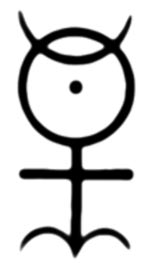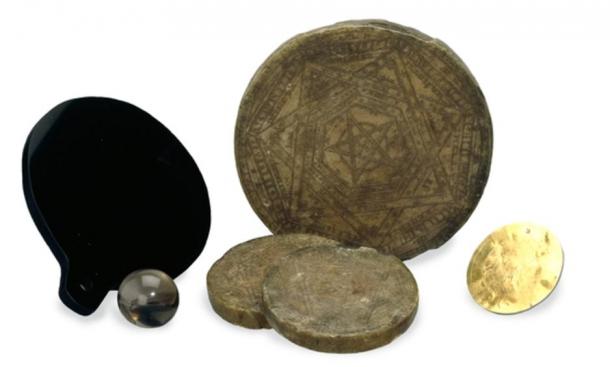
John Dee: Scholar, Astrologer, and Occult Practitioner that Captivated the Royal Court of 16th Century England
Born into the era of intellectual and artistic reawakening, John Dee quickly rose through Elizabethan society as a scholar, philosopher, navigator, doctor, and astrologer of the Queen of England. Intrigued with so many fields, including a deep fascination with the occult, John Dee’s vast interests resulted in his unintentional creation of the largest personal library in Elizabethan England at the time, visited by renowned scholars from all over the world. Luckily for modern historians, Dee was a prolific enough writer that his life is well documented, however the question why he was tasked with so many important roles in the British court is still an incredible dilemma.
John Dee Sets His Sights on the Royal Court
Though Dee wore many hats during his lifetime, he made astounding waves in each field. He was a skilled student at St. John's College, so much so that after obtaining both a bachelor's degree and a master's from the university, Dee set his sights on working directly in the Royal Court under Queen Mary I.

A 16th-century portrait of John Dee by an unknown artist. Public Domain
His relationship with the royal court, however, turned tumultuous as he became more interested in mathematics and astrology. Queen Mary I had him arrested in 1555 for "calculating", as mathematics and magic were considered close cousins in this time. The charges were of treason and he was imprisoned for a period, until finally exonerated by Bishop Edmund Bonner.
- The Book of Abramelin the Mage, Esoteric Grimoire of Kabbalistic Knowledge
- The Ars Notoria - An Ancient Magical Book to Perfect Memory and Master Academia
- Magic and superstition in ancient Egypt
Astrological Advisor of Queen Elizabeth I
Dee rose once again in the favor of the court when Elizabeth I became queen in 1558—three years after Dee's arrest. She took him on as her astrological advisor, allowing him the prestigious task of choosing the exact date of her coronation. After, he was given numerous important court duties, such as aiding in Elizabeth's exploration ambitions.
Rarely discussed in references of the New World, Dee actually helped pioneer the Voyages of Exploration England took on in the sixteenth century, aiding the various ship captains in their mathematical techniques of navigation. It was he who provided the instruments used to navigate the waters, himself being somewhat of a professional in the art of navigation. Driven by a mutual desire to reestablish the great British Empire, Dee and Queen Elizabeth I worked tirelessly in the exploration of North America. By 1583, however, he had given up his work as a navigation specialist, and chose instead to focus on his research into the forces of nature and the supernatural forces of the universe.
John Dee and the Language of Angels
What John Dee was most known for was his work in attempting to commune with the spiritual world, particularly heavenly angels. This work was preceded by endeavors at understanding the unifying factor of nature, which he believed could be discovered through a combination of magical and mathematical means.
Dee wrote his first astrological book called Monas Heiroglyphica in which he discusses the various facets of the symbol he created to represent the cosmos.

Dee's glyph, whose meaning he explained in Monas Hieroglyphica as representing (from top to bottom): the moon; the sun; the elements; and fire. Public Domain
Collaboration with a Psychic Medium
This text drew heavily on Christian Cabbalism, and was greatly coveted during his lifetime. However, Dee's struggle to find a prestigious patron was an uphill battle, and eventually he tired of this work on the cosmos. It is then that Dee began to focus his efforts more seriously on his angelic search, eventually joining forces with a medium called Edward Kelley, a man twenty-eight years younger than him, to conduct séances to interact with the angels. Through their continued meetings, Dee and Kelley claimed to have been given the gift of a new alphabet, said to have been revealed to them by angels. They called the language ‘Angelic’ and later it became known as ‘Enochian’.
- The Ancient Art of Magic, Curses and Supernatural Spells
- Ancient Magic: The Illusions Created in Temples by Amazing Inventions
- Picatrix: The Ancient Arabian Book of Astrology and Occult Magic
John Dee Claims to Have the Gift of Alchemy
Less than a decade after meeting, however, Kelley and Dee's interests began to drift once more. Kelley himself claimed that he was also gifted in alchemy and could turn ordinary metals into gold. As such, Kelley continued to work with Dee as his scryer, but focused much more of his time on an attempt to transform substances and find the legendary Philosopher's Stone.

The magical tools of John Dee: golden and wax discs, a quartz sphere, and a polished mirror. Wikimedia Commons
John Dee: The Final Years
The seven years they spent together, leading nomadic lives and working endlessly on their newfound alphabet, came to an abrupt end in 1589, when Kelley returned to the court of the Holy Roman Emperor Rudolph II and Dee went home to England. Dee outlived his former friend by many years, and continued their work, immortalizing them both with his Angelical/Enochian literature.

“The Enochian alphabet with letter forms, letter names, English equivalents, and pronunciation of the letter names (pronunciation in quotes if different than English).The Enochian letters in this chart are read from right to left, as written in John Dee's diary.” Wikimedia Commons
Over time, Dee's work in the occult became more heavily criticized and, after parting ways with Kelley in 1589, he became Warden of Christ's College in Manchester, England. He died a poor man's death in 1608, having fallen out of favor with Elizabeth I's successor James VI/I.
Despite the way his life ended, John Dee was considered somewhat of a wizard in Elizabethan circles. Even with so few followers of his angelic endeavors, his work evolved into a modern magical and religious practice that continues to be utilized by occult organizations around the world.
Still Creating a Dramatic Scene
In 2016, researchers got another reminder of John Dee’s mysterious ways. They were shocked when they discovered a hidden element through x-ray analysis of the famous painting depicting ‘ John Dee performing an experiment before Queen Elizabeth I’ (the top image in this article) . It’s been revealed that Dee was originally painted standing before the queen in a circle of skulls.
It is not certain why the artist Henry Gillard Glindoni initially painted the skulls, however, it is possible that “After Elizabeth died, scholars would paint Dee as a deluded fool. It's that legacy that may have inspired Glindoni to add the skulls to his painting, perhaps along with the Victorian-era obsession with death. But why did he then paint over them?”
Curator Katie Birkwood provided a reason, “Glindoni had to make it look like what we now see, which is august and serious, from what it was, which was occult and spooky. That epitomizes the two different impressions of Dee which people have and the fight between them.”
Featured image: John Dee performing an experiment before Queen Elizabeth I. [Wellcome Images, a website operated by Wellcome Trust, a global charitable foundation based in the UK.]
By Ryan Stone
References
Dee, John. " Monas Hieroglyphica ('The Hieorglyphic Monad')." Esoteric Archives. Accessed June 10, 2015. http://www.esotericarchives.com/dee/monad.htm
DuQuette, Lon Milo. Enochian vision magick: an introduction and practical guide to the magick of Dr. John Dee and Edward Kelley (Weiser: Maine, 2008.)
Feingold, Mordechai. "John Dee: English Mathematician." Encyclopedia Britannia. Accessed June 9, 2015. http://www.britannica.com/EBchecked/topic/155467/John-Dee
French, Peter. J. John Dee: the World of an Elizabethan Magus (Routledge: London, 1987.)
Parry, Glyn. "John Dee and the Elizabethan British Empire in Its European Context." The Historical Journal. 49.3. Sept 2006. http://0-www.jstor.org.read.cnu.edu/stable/4091576
Tratter, Walter I. "God and Expansion in Elizabethan England: John Dee, 15227-1583." Journal of the History of Ideas. 25.1. 1964. pp. 17-34. http://0-www.jstor.org.read.cnu.edu/stable/2708083
Wilding, Michael. Raising spirits, making gold, and swapping wives: the true adventures of Dr. John Dee and Sir Edward Kelly (Beeston: United Kingdom, 1999.)
"John Dee." Elizabethan Era. 2015. Accessed June 9, 2015 http://www.elizabethan-era.org.uk/john-dee.htm.
"John Dee." Encyclopedia of Occultism and Parapsychology. 2001. Accessed June 9, 2015. http://www.encyclopedia.com/topic/John_Dee.aspx
"John Dee." St. Andrews' School of Mathematics and Statistics. August 2002. Accessed June 10, 2015. http://www-history.mcs.st-andrews.ac.uk/Biographies/Dee.html
















Comments
The painting seen at the top of the page, depicting Dee performing a ritual or experiment before Queen Elizabeth 1st, was altered by the 19th century artist, Henry Glindoni. In the original version, Dr. Dee was shown standing in a circle of human skulls, placed on the floor. Glindoni painted them out, possibly at the request of a potential buyer. The skulls were discovered a couple of years ago when the painting was x-rayed.
there was an article i read ..its somewhere unlinked on www.enterprisemission.com where it makes mention of him summoning a demon for the purpose of increasing scientific knowledge providing that massive bloodshed be dedicated to that entity… as for its veracity… well idk. but too many wars too many dead, and the technological accelleration is still increasing.. food for thought
infinitesimal waveparticles comprise what we call home the earth
manipulatable by thought ability supressed in humans since birth